
..........................................................................................................................................................................................................
everyone has a past
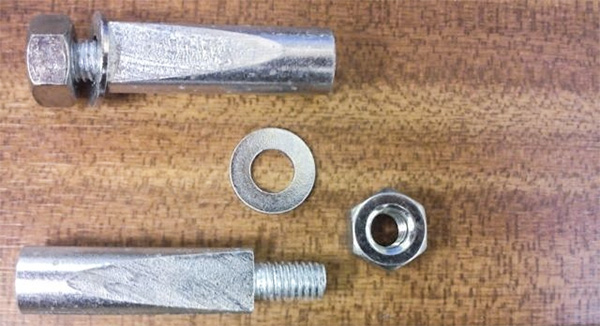
among the hundrds of satellite tv channels available these days, is one called yesterday, a channel i can only assume began its days offering predominantly historical content. however, it may have spread its wings just a smidgeon in the intervening years to offer more varied fare. one such item on the programming list is entitled bangers and cash, which features a family-run business in yorkshire, the main purpose of which is the auctioning of vintage cars and other elderly items, including bicycles.
as previously advised, i have little truck with the motor car, but i do have a bit of a soft spot for those from yesteryear, when there seemed to be more craftsmanship and design intellect than is the case today. in common with the pinnacle of contemporary bicycle design, much is achieved nowadays by means of fluid dynamics software; and if everyone is asking the same questions of said software, they're probably all getting the same answers. that, as conjecture, would explain why many vehicles and bicycles look pretty much the same.
however, were the auction of vintage vehicles the sole selling point of bangers and cash, it would have quickly become repetitive and we would have been switching off in droves. but every so often, one of those vehicles sold at the drop of a gavel, is sent for refurbishment to a specialist in the field, which is where much of the interest resides. who could resist watching the various steps involved in pulling a vehicle or bicycle apart in order to rebuild it as good as or better than new? of course, all this comes at a price, which can sometimes be substantial.
a recent episode included a 1960s hercules ladies bicycle sent for refurbishment to a community resource that specialises in taking derelict bicycles and restoring them to rideable condition, in order to further extend their practical life. in the case of the hercules, the main sticking point came at the behest of the crankset, affixed to the bottom bracket axle by the tried and tested cotter pin. for those who are uninformed as to this means of attaching the crank arm to the bb axle, the axle end of the crank featured a hole into which a wedge shaped pin would be inserted, matching up with a flat edge on the bb axle. this pin would be hammered into position until there was no observable play in the crank, at which point a nut would be tightened onto a threaded protruberance on the end of the cotter pin, thus holding it in place.
as you can perhaps imagine, had that cotter pin been in situ since the 1960s, there's every possibility it might be well and truly stuck; precisely the situation that faced the mechanic in this particular situation. the idea had been to retain as many of the original parts as possible during the refurbishment process, leading the mechanic to persevere not only with a large hammer, but with a blowtorch in the hope of freeing it from its grasp of the bottom bracket. (spoiler alert: he ultimately loosened its grip, allowing re-use during the rebuild process.)
the interface between the bottom bracket and crank arm has changed several times since the 1960s. at the point when cotter pins began to be phased out, the inner face of the crank connection point was tapered to match that of the bottom bracket axle. initially the crank arm was held in place by a nut threaded onto the bb axle, but subsequently by a bolt tightened into the threaded interior of a hole in the axle.
however the bicycle, if you'll pardon the pun, was never a vehicle to stand still. the square taper bb axle was essentially a solid rod and, as your physics lessons may have informed you, a tube is stronger than a rod (hence the q/r wheel axle) and coincidentally, potentially lighter. so the bb axle gained in diameter, lost the tapered edges, which were replaced by a series of splines, all of which matched with the inner part of the crank end. to a certain extent, the latter remains the case, only one end of the axle now tends to be permanently fixed to the drive side crank arm. unless you have a campagnolo chainset, in which case there is half of the bb axle attached to each crank arm, both of which meet in the middle by way of what is referred to as a hirth coupling.
i have long been an advocate of the square taper bottom bracket, a device that, to me at least, performed the desired function required of a bottom bracket/crank assembly more than satisfactorily. once again, however, the problem was one brought on by the use of aluminium in bicycle frames. enlarged diameter tubing required a larger diameter bottom bracket shell onto which the seat tube and down tube could be welded, meaning, essentially the opportunity/requirement to correspondingly enlarge the bottom bracket axle and bearing cups. but the cotter pin bottom bracket was effectively before my time, or i have every confidence that i'd be touting its benefits against that of the square taper.
but just as the ahead stem has become ubiquitous as a replacement for the arguably far more versatile and stylish, quill stem, the advent of carbon fibre steerers would ultimately have sidelined the latter in any case. and similarly, aluminium and carbon cranks have made it all but impossible to retain the services of the cotter-pin. in which case, it would be a moot point for me, or others, to encourage in the face of material adversity.
however, after watching several episodes of bangers and cash, comes the realisation that, despite continual technological improvement, it's quite possible that we're losing something, and not just in the velocipedinal realm. at the cutting edge, i'd imagine there is no room for sentiment: tadej and jonas care only about winning, and if a cotterless crankset will bring them first to the finish line, then cotterless it is.
but the majority of us care not one whit for thoughts of a finish line. and though we're in the majority, it seems that industry, for most of its life, is less than concerned about majorities; marketing does the rest. however, this is not specifically one of my luddite moments. i'm simply taking the opportunity to highlight some of the aspects of the bicycle with which we seem all too keen to dispense in the quest for the next big thing. of course i could easily be seen as a hypocrite, with a twelve-speed italian groupset on my road bike and hydraulic discs on a carbon 'cross bike, but i can only offer in response, an excuse gleaned from the archives of monty python's flying circus: "it's a fair cop, but society is to blame."
monday 23 january 2023
 ..........................................................................................................................................................................................................
..........................................................................................................................................................................................................give me a brake
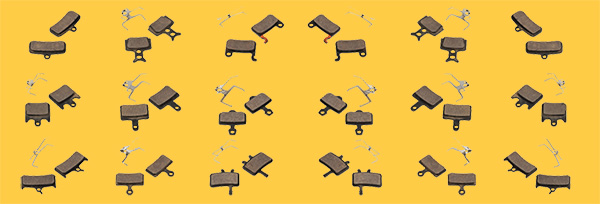
only a few days after describing my abject failure to properly maintain the headsets under my jurisdiction due to their hidden nature, i now find myself ruminating on just how au fait i am with disc brakes. unlike the campagnolo record rim brakes on my ritchey logic, the pads that allow me to stop on my specialized crux are effectively hidden from view, though undoubtedly not excluded from wear and tear.
thoughtfully, the brake pads on the record calipers feature a wear-line, a mark molded into the pad, below which it is not recommended to continue use. closer examination reveals that, should i persist with use beyond this notification, there's every possibility that the threaded metal insert would connect with the wheel rim; i'd prefer not to be alerted to such a misdemeanour through a flurry of sparks. and while i'd be fibbing if i indicated that i check the pads following each bike ride, i do give them a cursory glance once per week.
so doing is even more desirable if riding on carbon rims, for two reasons. if reaching the metal insert, it's going to quite literally tear strips from the abraided carbon rim. but then from the opposite side, and i did look more closely at this last year, carbon has a tendency to wear more quickly than aluminium brake tracks, meaning that those eye-wateringly expensive carbon wheels possibly wear even quicker than the yellow swiss-stop pads i fitted when the wheels were new. disappointingly, no-one seems to tell you that at point of purchase.
but the visual reminder offered by the caliper pad wear-line, is one of the factors that used to make cycle maintenance, as sergei would say, 'simples'. i harbour similar fears about the current trend for hiding the cables from sight. i cannot disagree that it gives most bicycles a distinctly clean, smooth appearance, but having seen the wiring-loom that now enters the top of the head tube/steerer, i'd be a tad wary of acquiring any bicycle thus configured. i am reliably informed that assembly or repair of a cycle with integrated cabling has turned a job that once took an hour or so, into a task that occupies more than a day.
however, the problem with disc brakes, if, indeed, you regard them as a problem, is the concealed nature of the pads, complicated perhaps, by a variety of pad materials which few, including yours truly, actually understand. for instance, what's the difference between organic, sintered, or semi-metal? and assuming you can answer that question, what's the difference in terms of wear? aside from the few variations of rim-brake pad materials, and the variations in terms of shoe-fittings, the means of affixation is relatively standard. unfortunately, there are so many different patterns of disc pad, that it's stopped being funny.
for instance, having need of replacing the carbon specific shoes on the ritchey while it still wore a campagnolo bora wheelset, i discovered that the only spare set in my possession was prescribed for shimano brake shoes. but as many of you will be aware, with one or two judicous pruning manouevres, it's eminently possible to safely fit shimano to campagnolo and vice versa. i have several thousand kilometres that will attest to that contention.
but the sram rival disc calipers fitted to the specialized will accept only those designed specifically for those brakes. and, as many will agree, it can be a major faff to remove the worn pads and replace them with new. in the case of the rival calipers, that involves an almost impossibly small allen wrench and a tiny retaining clip which, if dropped, can prove all but impossible to find. and anyone who claims to have fitted new pads and re-installed the wheel and rotor without experiencing rubbing of some description, is probably living in the land of make-believe.
granted, there are always the mounting bolts to allow adjusting the position of the calipers, and the additional factor of likely having to press the pistons back into their little pots, a process that, more often than not, requires an honours degree in physics. however, though the foregoing is largely unavoidable, there's still the answer to my opening question; how do you know when to change?
according to a recent article by lennard zinn, the wear rate on disc pads will depend on the terrain in which they're used and, apparently, the weight of the rider. it would, therefore, not be hard to believe that the average professional grand tour rider could conceivably manage an entire three-week race, without need of a pad change. the majority of professional riders weigh little more than their bicycles, and those three weeks in july are hardly an onerous undertaking from a road surface point of view. but while a quick search elicited that there are several tools available that allow for the checking of rotor wear, i was unable to find anything that could test for pad wear, other than periodically removing the pads.
the difference here is surely one of awareness? you and i will probably be at least peripherally aware of the principal components of our bicycles. and even if we're not qualified mechanics, there are visual and feedback loops that might advise that something is out of kilter. difficulty in changing gear, or indexed steering to name but two. however, with the majority of new bikes of any ilk arriving with hydraulic discs these days, how many happy customers riding home from the bike shop are aware that their brake pads will eventually wear out? the answer might surprise you.
the onus, therefore, surely resides with the manufacturers either to make customers as aware of potential and eventual pad wear, as they have been over correct closure of q/r levers or thru-axles. i think many of us would settle for a few words in the brochure or website advising to regularly check the brake pads along with an estimate of how many kilometres could be reasonably expected under normal riding conditions. until that day dawns, regular visual inspection of my disc brake pads will be added to the list, along with bottom bracket bearings, headset bearings and chain wear. but essentially, i'm still unaware as to the potential lifespan of my disc brake pads.
as for those annoying little squeaks and rubbing noises...
sunday 22 january 2023
 ..........................................................................................................................................................................................................
..........................................................................................................................................................................................................incompr-e-hension
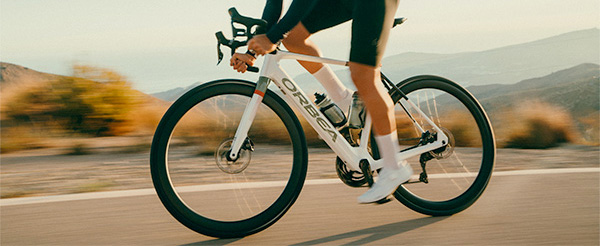
i like to think of myself as reasonably well educated, though as with most of us, there are areas in which i struggle. i believe that i have a grasp on einstein's theory of relativity, though i doubt i could conduct a coherent lecture on the subject. i have taught further education classes in my purported areas of expertise (indesign and photoshop), and i currently assist with a journalism class at the local secondary school. during all of the above, i have never had to suffer the slings and arrows of discontent, on the basis of which i can but assume my ministrations were moderately successful.
however, as the days, weeks and months roll by, i find myself in a state of incomprehension over several facets of modern velocipedinal existence.
many biographies penned (or ghost written) by notable cyclists, pay considerably more than lip service to their formative years on two wheels. almost invariably, these are attributed to their earliest feelings of independence coupled with sensations of freedom. taking the bicycle from the bikeshed and heading off down the driveway and out into what had previously been categorised as the big bad world. reading of those recollections is possibly the only chapters with which most of us will find anything in common. the later chapters of purgatorial training sessions and subsequent victories are several worlds apart from our own.
but the modern world is one with which i find myself decidedly estranged. aside from the notable fact that i do not own a mobile phone (nor do i want to) and despite continual persuasive attempts from the staff at my local bank, i have no intention of subscribing to digital banking. both of the foregoing are, i'm willing to admit, hardly guaranteed to integrate myself into contemporary life, but on the basis that i've survived this long without the aid of any of the above, i'm quite happy to leave matters as they are.
and just as a quick aside, surely bank staff persuading their customers to adopt online digital banking is akin to turkeys voting for christmas? there is many a rural location now bereft of a bricks and mortar bank, yet those with whom i have cordial relations, seem hell-bent on making themselves redundant.
anyway, to return to our previous discussion, the technological aspects of contemporary life are hardly confined to the banking industry; that of the velocipede has hardly remained unscathed. and just like the word of money, cycling became infected with zeros and ones apparently by subterfuge. first it was our gear levers and derailleurs, soon to ignore my advice and place apps on smartphones. in quick succession came strava, zwift and the e-bike, though not necessarily in that order.
i recall, many years past, in these very pixels, proclaiming that i thought the nascent e-bike market to be targetting the wrong set of potential customers. surely, i proposed, the addition of motive power would be better aimed at those considering vespas, lambrettas or mopeds, than die-hard cyclists. as with most things, it seems i was wrong. yet, despite my incomprehension and misgivings, the e-bike did appear to have some traction amongst the elderly and the infirm, potential customers who might be allowed to immerse themselves in the joy that favoured the rest of us. a hands-on review of a speclaized vado, however, convinced me that i, for one, was not a part of the target market, and i was naive enough to include the fitter members of society in this folly.
why, i reasoned, would anyone with the capability of riding an analogue bike under their own steam, be attracted to the heavier, more expensive and rechargeable option?
in retrospect, i overestimated the rigour of a substantial section of the population. you need only witness the huge range and continued development of the e-bikes now available, along with dedicated retail space for those who desire to join the electric movement.
however, such matters were surely only of concern amongst the great unwashed? the cognoscenti, accustomed to the joys and vicissitudes of glory through suffering, would scarcely stoop so low as to cast-off the promulgated hardships of training, of breathless ascending and long-distance cycling (the latter proving less than pragmatic due to frequent charging requirements)? yet once again, i was able to demonstrate my complete detachment from modern thinking, for several of the world's top road bike purveyors have spent many research and development coins creating top level carbon road bikes with e-bike augmentation.
the latest in the latter trajectory arrives from spanish manufacturer, orbea which is offering the gain e-road bike. according to orbea, the gain offers a "high-quality riding experience for anyone who wants to enjoy cycling as never before." they continue to profess the bike's excellence by stating, "The pedalling is so natural that you will feel like you are on a traditional bicycle but with an extra boost of power."
and at that point, my incomprehension is magnified. for i was under the impression that those of us in thrall to the road bike had joined the merry throng to experience pain and suffering at first hand, ever mindful of rule#5; to enter the office on a monday morning replete with weekend tales of derring-do, underlined by large numbers of kilometres in both distance and speed, achieved despite galeforce winds and horizontal rain. such details would be insouciantly delivered to our work colleagues almost as an aside, as if it were nothing out of the ordinary.
but the existence of drop-bar e-colnagos, pinarellos, bianchis and now orbeas would suggest that an appreciable market exists for such bicycles. and in order to more closely achieve conditions to make you "...feel like you are on a traditional bicycle" orbea may have mis-named their latest offering, having quoted 11.5kg as the all-up weight. naturally enough, possibly insistent on adding insult to injury, the gain features totally integrated cables, meaning surely, that the days of home maintenance are about to disappear over the horizon.
i think i liked the days of black and white better than i like today's 3d colour.
saturday 21 january 2023
 ..........................................................................................................................................................................................................
..........................................................................................................................................................................................................less is more
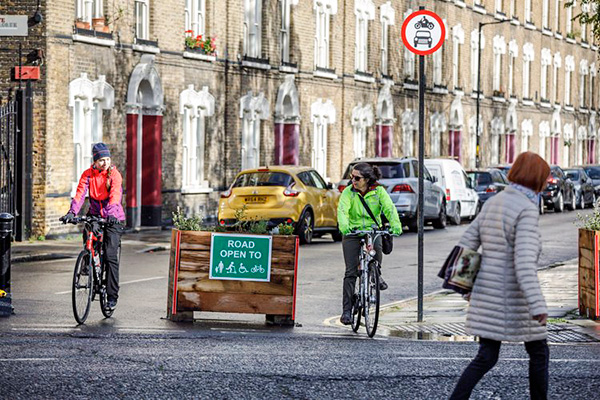
if i may, i'd like to circle back a few days to the article in which those in alleged 'transport poverty' claimed that, should the uk be populated with a comprehensive cycle network, they would be predisposed towards adopting the bicycle for at least the shorter journeys. my cynicism brought me to query the validity of those statements, predominantly on the basis that the if only... excuse has been trotted out several times too often. additionally, i was brought to point out that many of those who drive their kids to school, often do so at the behest of 'too much traffic', seemingly oblivious of the fact that their daily actions were innately responsible for at least a portion of that traffic.
the latter situation is not one that is new. councils and governments have long sought to either reduce the amount of traffic around schools each day, or, should that prove well-nigh impossible, to at least slow it down to manageable proportions. but such machinations are scarcely constrained to the roads adjacent to primary and secondary schools; many traffic-calming or exclusions have sought to displace so-called rat runs.
that is the colloquial name often applied to the use of roads through residential areas being used by commuting motorists attempting to avoid the main arteries to and from work, often the scene of traffic snarl-ups and congestion. there has been a commonly held belief that these low traffic neighbourhoods (ltn) simply don't work, or don't work as well as advertised. there has also been conjecture that the ltn simply displaces motor traffic to boundary roads, in many cases, simply making things worse.
the latter supposition features a persuasive amount of logic. after all, if the road ahead is blocked, the average motorist is likely to drive along the nearest thoroughfare which, by extension of that same logic, will result in an increase in traffic in those areas. however, a study conferred between climate change organisation 'wearepossible' and westminster's active travel academy looking specifically at locations within the london area, has conclusively shown that not only do low traffic neighbourhoods actually work, but that their existence has no adverse effect on nearby boundary roads.
the report demonstrated that most streets within low traffic neighbourhoods witnessed reductions in traffic, improving the experience of walking and cycling. two-thirds of these neighbourhoods now have vehicle flows below 1000 vehicles a day, compared to only two-fifths before. across london the average traffic reduction within ltns was 46.9%. and with regard to those boundary roads, average motor traffic counts showed that on boundary roads, traffic changed relatively little, with a less than 1% increase on the mean average of 11,000 vehicles that pass through boundary roads on a typical day.
of course, it would be naive to pretend that the results of the report are not those that both organisations had conceivably hoped for at the outset (though it cannot be denied that apocryphal perceptions might have suggested otherwise). humankind, possibly with good reason, is often highly suspicious of statistics, particularly when those proffered seem inclined to support the aims of the publishing organisations. the above conclusions would have possibly had greater impact had they been released by one with leanings more towards the motorist. the phrase there's lies, damned lies and statistics presumably exists for good reason.
however, the ultimate use of this report has less to do with a bout of flag-waving by those involved, and more to do with the sincere hope that those with the power to impose or remove low traffic neighbourhoods, will accept the figures at face value and act accordingly. given the apparent confirmation that the existence of low traffic neighbourhoods appears to have no adverse implications for the nearby boundary roads, there is presumably considerably less justification for councils to remove the low traffic neighbourhoods, constructs often held up by the motoring public as an affront to their ability to drive anywhere they like.
in fact, should the report's conclusions be accepted as proven, there are surely grounds for imploring councils to expand upon the meme, making life for pedestrians and cyclists distinctly more favourable? those responsible for the above revelations feel that the report shows it is now vital for local authorities to consider other measures that could possibly alleviate the instilled problems that are experienced along boundary roads, such as expanding low emission zones, urban greenery, increasing public transport provision etc.
while this particular report is aimed squarely at local authority planners in the country's capital city, there's no reason to suppose matters will prove any different in towns and cities across the uk (though i don't doubt similar surveys are being carried out even as we speak). if westminster and holyrood ever become serious about climate change - and one hopes that they might do soon - waking up and smelling the roses could hopefully result in lower volumes of motor traffic where it counts most, and increased emphasis on walking and cycling.
i'm sure we all live (and cycle) in hope.
friday 20 january 2023
 ..........................................................................................................................................................................................................
..........................................................................................................................................................................................................bike for good
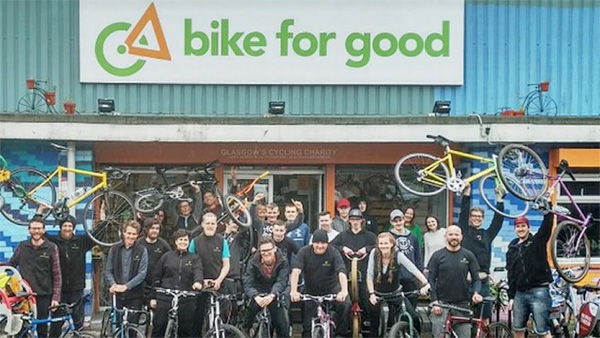
the bicycle industry appears to have entered somewhat of a quandary since the end of 2022, one that, if anything, seems highly contradictory. not so very long ago, during the periods of covid lockdowns, many cycling advocates were heard to rejoice that the true era of the bicycle had finally arrived. pop-up cycle leanes appeared in towns and cities across the uk and mainland europe, while city leaders proclaimed that they would never again, allow the polluting motor car to sully their streets and travel infrastructure.
bicycle shops were regarded as essential services, and allowed to remain open, while other retailers closed their doors, during which period, many shops advised that they were selling every bike on the shop floor the minute it appeared. many adopted the way of the saddle as a means of safe transport to and from work, bathing in the glory of very lightly trafficked streets and the ability to remain safe and away from infection.
it's quite possible, however, that many were caught up in their own hyperbole, convinced that such a velocipedinal idyll would continue into the foreseeable future. why wouldn't it? that particular bubble burst very quickly, with several european and british cities admitting that, following the lifting of lockdown restrictions, pollution rates within their cities were back to normal, or, in some cases, greater than normal. quite why anyone of sound constitution would have imagined that the population at large would prefer to leave their motor cars well alone, is something of a mystery to me.
granted, there will be some who found new life on their bicycles and resolved to have it remain so, but i'm pretty sure they would be in a distinct minority, particularly when autumn and winter arrived on their doorsteps. now that international shipping is pretty much back to normal and supply chains are no longer the bottleneck, adverse tales have been quick in coming over the past few months, that the bicycle industry now finds itself in a major predicament. i even witnessed unsubstantiated evidence that in some places, new bikes are already on sale with discounts as high as 70%. two of the world's largest cycle manufacturers, trek and specialized have been forced to make changes, with the latter not only quickly dispensing with the services of their noted influencers, but soon after, reducing their workforce by 8%.
neither of those moves reflect a healthy industry.
but, to a degree, the big boys can take care of themselves, with sufficient cash in hand to ride out increased interest rates, inflation and reputedly falling sales. but the cycle industry is home to a wide variety of much smaller businesses and charities, many of which work at the micro-level, serving their local communities and alleviating the transport woes of the considerably less well off, particularly as the world experiences a cost-of-living crisis.
one such outlet now finds itself a victim of the circumstances with which it once sought to assist. glasgow's bike for good, founded in 2010, services and sells refurbished bikes, teaches mechanic skills, provides cycle training, and delivers community programmes, with the avowed aim to change lives for the better through cycling. but due to the current economic climate, it is suffering a major downturn in its cashflow, and has immediate need of £15,000 to see it through the winter months. to place that in perspective, £15,000 would scarcely buy you tadej pogacar's tour de france colnago.
gregory kinsman-chauvet, founder and superbly named, 'cycling enthusiast officer' (CEO) at bike for good, said, "We believe in a world where cycling is the norm. We've helped thousands of people cycle in and around Glasgow in twelve years. Due to the cost of living crisis, our charity is in grave danger." the nature of the charity's business model scarcely allows for a drastic change in its economic strategy to help mitigate matters, so it has resorted to a crowdfunder campaign in the hope that enough of us will be happy to help.
i'm sure that every one of us has cause to thank the bicycle for keeping us fit, sane and happy, so in order to ensure that can still happen for many others, please click the link and donate. (at the time of writing, they were just over half-way to their target).
bike for good crowdfunder campaign
thursday 19 january 2023
 ..........................................................................................................................................................................................................
..........................................................................................................................................................................................................outside is still free

at the local newspaper where i ply at least some aspects of my trade, we formerly printed each issue on a single head, offset litho press. this involved generating print pages from a computer, transferring those to a very large platemaker to create what was referred to as a 'silver master' flexible plate which would subsequently be rolled around a drum on the press. when printing proceeded, the reversed, silver areas of the plate would take the ink, while the black areas, dampened with a water feed, would reject it, ultimately resulting in the desired image on paper, and on as many sheets of paper as required.
as can perhaps be derived from my distinctly non-technical description, operating the press required trained personnel. and though i held no qualification, i had received several months' training many years ago, to enable me to run the press, should the trained printer be on holiday or unwell.
this lent itself to a natural demarcation within the business, with design work separated from the printing aspect in terms of pricing. printing prices rarely included the design and layout costs, and two individuals were independently charged with producing the relevant figures. however, as those who struggle to remove the cotter-pins from their cranks will know, technology moves on.
when the platemaker finally gave up the ghost a few years past, unable to find an economic replacement, we had to bite the bullet, so to speak, replace the litho press process altogether and switch to 100% digital. while this has substantially eased the entire printing process (though not necessarily speeded up matters), it has brought into question any thoughts of demarcation. for starters, it has shifted the emphasis from the printing process to the pre-press process, which now demands the greater technical knowledge, related to line-screen settings, colour matching and the myriad settings available within the associated printer drivers.
but perhaps the biggest change, and one under discussion earlier this week, is that of pricing. no longer is there a strict difference between printing prices and photocopying, since both processes are carried out on the same machine. and though there are still prices associated with actual printing, they tend to be fixed, varying only according to the number of copies required; the onus has shifted to the person using the computer and the software skills required.
there should be a standard method of pricing, but legacy features tend to die-hard, so discrepancies still occasionally appear, internally at least, depending on the customer and who is responsible for the calculation. it all works itself out eventually, but depending on who happens to be in the office at any given time, depends on whether the customer can be offered an immediate price, or have to wait a day or two for the relevant individual to be present.
it seems that this less than pristine situation has carried itself across the atlantic to san francisco, california and strava headquarters. while i believe there may still be a free version available to those who sign up to the online training app, many have opted to pay an equitable monthly or annual subscription fee to gain access to extra and presumably more interesting features. however, it seems that strava has acquired not entirely unjustified criticism of late due to a wide-ranging set of price increases that are reportedly not uniform across the board.
at this point, it should be underlined that this appears to be their first price increase for almost a decade, so it would be a mite unjust to attack them for profiteering. however, according to several sources, just how much you'll now have to pay seems to depend greatly on how much you were paying previously and where in the world you are domiciled. cycling blogger, d c rainmaker posted an image of a strava subscription notice advising that the paid-for price was about to increase from an annual $59.99 to $99.99. and he also pointed out, to better illustrate the apparent disarray in which a service with over 100 million users worldwide could find itself, that, if you wish to change your subscription from monthly to annual, you'd have to cancel your membership account, wait for the current month to expire and remember to re-subscribe.
i cannot deny that i view and write from a position of relative mirth. i do not possess a strava account. any data recorded by my bar-mounted gps device is immediately deleted on return; it's only really there to tell the time. and i seriously doubt that i enjoy my cycling any less than do those with their eccentrically varying subscription costs. in fact, i'm inclined to think i enjoy it more, but that's an unsupported conclusion. though i write from a position of ignorance, i'm pretty sure that cyclists were able to successfully train for many a long year prior to strava's founding fourteen years ago. and they still refer to their users as athletes.
outside is still free.
wednesday 18 january 2023
 ..........................................................................................................................................................................................................
..........................................................................................................................................................................................................e-malgamation
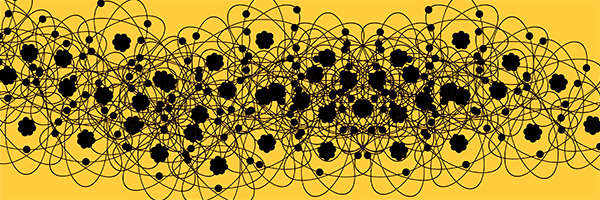
though i seriously doubt that these particular pixels are the medium in which present day current affairs ought to be discussed, in this case, i may have to make an exception. and, disappointingly, the circumstances with which i begin this discussion are not of the comfort and joy variety, partly concerning, as they do, putin's invasion of ukraine.
president zelensky has long asked that his western allies provide his nation with a wide variety of armaments, that the ukrainian armed services might not only repel the invasion, but begin to turn the tables on the aggressor. however, it has frequently been pointed out that the supply of such armaments might be considered by putin to be an attack on the russian state by nato forces, resulting in prolonged discussion of the possible repercussions of forcefully demonstrating their tangible support for the ukrainian nation.
thus, president zelensky has held high hopes that britain might provide a modest portion of its complement of challenger tanks. if i have understood matters correctly, the number of tanks likely to be on offer is around a dozen, not a number likely to make a large dent in the ambitions of putin's armies. however, zelensky is hoping that, if britain proves willing, their largesse will place peer pressure on other members of nato to step up to the plate, in particular, germany, a nation reputedly in possession of more than enough leopard tanks to make a difference.
however, over the weekend, the fabricator of the latter armaments, 'rheinmetall', with twenty-two leopard 2 in stock and a further 88 older leopard 1 versions, has pointed out that preparing them for battle will take several months (complete dismantle and rebuild), thus delaying any thoughts of delivery prior to 2024. 'rheinmetall' apparently manufactures the tank's gun. but, as a testament to industrial diversification, 'rheinmetall', at least until last week, owned a subsidiary company called amprio which has now been consumed by the sram corporation.
however, this does not foretell of sram planning to enter the armaments industry; amprio manufactures 'made in germany' e-bike motors, with research and development centre and test centres based in dusseldorf. apparently the notion that sram was to enter the e-bike market has been rumoured for some time. the recent purchase effectively supports the rumours.
but, as we now all know so well, an electric motor on a bicycle is of no pragmatic use, unless it has a battery to power it and control software to manage them both. and co-incidentally, amprio not only produces a range of batteries but also a couple of display units; the software, in common with the majority of such developments in the e-bike industry, connects with ios and android phones via bluetooth. according to reports, sram has had lengthy flirtations with electric bike motors, quite possibly while keeping an eagle-eye on its competitor, shimano. though it has filed several patents for in-house development, it now appears that they have opted to acquire a proven, existing setup.
the six thousand dollar question is surely whether this acquisition is as a result of sram staking its future in the electric domain, one of which it already has tangential experience through its w-fli, wireless gear shifting, or perhaps simply ensuring that it does not get left behind if the rise and rise of the e-bike proves to be an enduring one. not only the bike industry has a record of companies disappearing from sight as a result of dismissing new genres as fleeting fads. if further evidence is required, note how many cycle manufacturers jumped remarkably quickly on the gravel bike uprising.
we should, i daresay, accept that the e-bike is not only here to stay, but possibly soon to behave like the proverbial cuckoo, taking over the nest and ejecting the analogue bike as suitable only for confirmed luddites such as yours truly. though i have been occasionally berated for my apparent disdain expressed towards the e-bike, having watched some excellent analogue cyclocross from milnthorpe on saturday and sunday, it gives me sleepless nights that it may only be a matter of years before riders stop in the pits to recharge rather than swap bikes.
i do understand that the e-bike has been a saviour for a wide-range of customers, and i am even aware of someone who commenced their velocipedinal life aboard an e-bike and is now considering an analogue version as an upgrade. but in the drive towards climate change, surely the analogue bicycle is by far the better option? for starters, an e-bike, tautologically, requires electricity to operate and that electricity has to be generated somewhere, whether from renewable sources or otherwise. and i defy anyone to tell me that lithium is a great idea; if so, why will the royal mail not deliver lithium-ion batteries to the islands, and why does the representative graphic feature a flame?
just like facebook and the atomic bomb, it's simply not possible to uninvent the e-bike, but perhaps matters might be resolved more equitably if purchase of electrons was means tested? in other words, you have to prove that you need an e-bike before permission is granted to buy one.
just a thought.
tuesday 17 january 2023
 ..........................................................................................................................................................................................................
..........................................................................................................................................................................................................